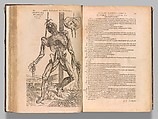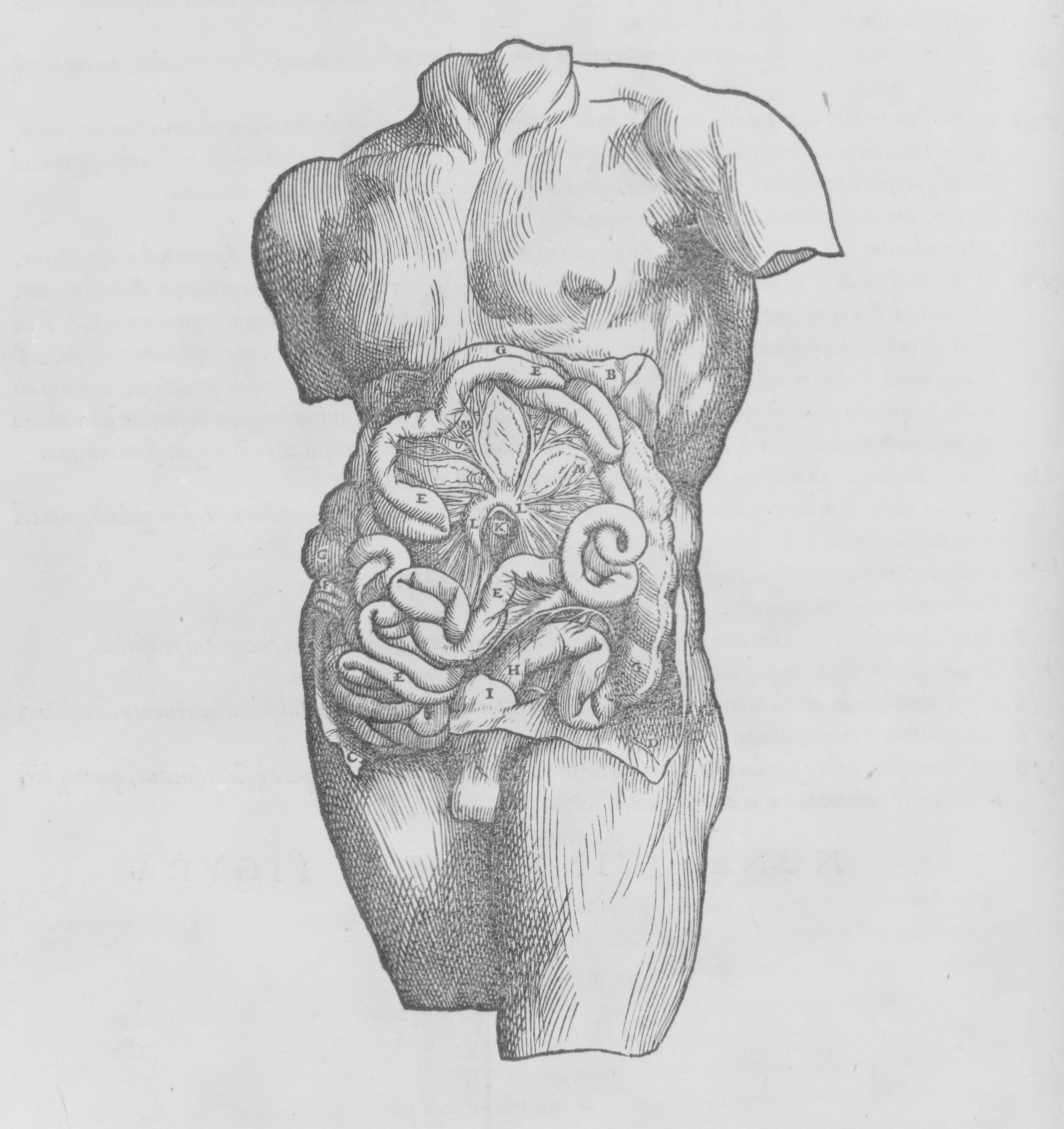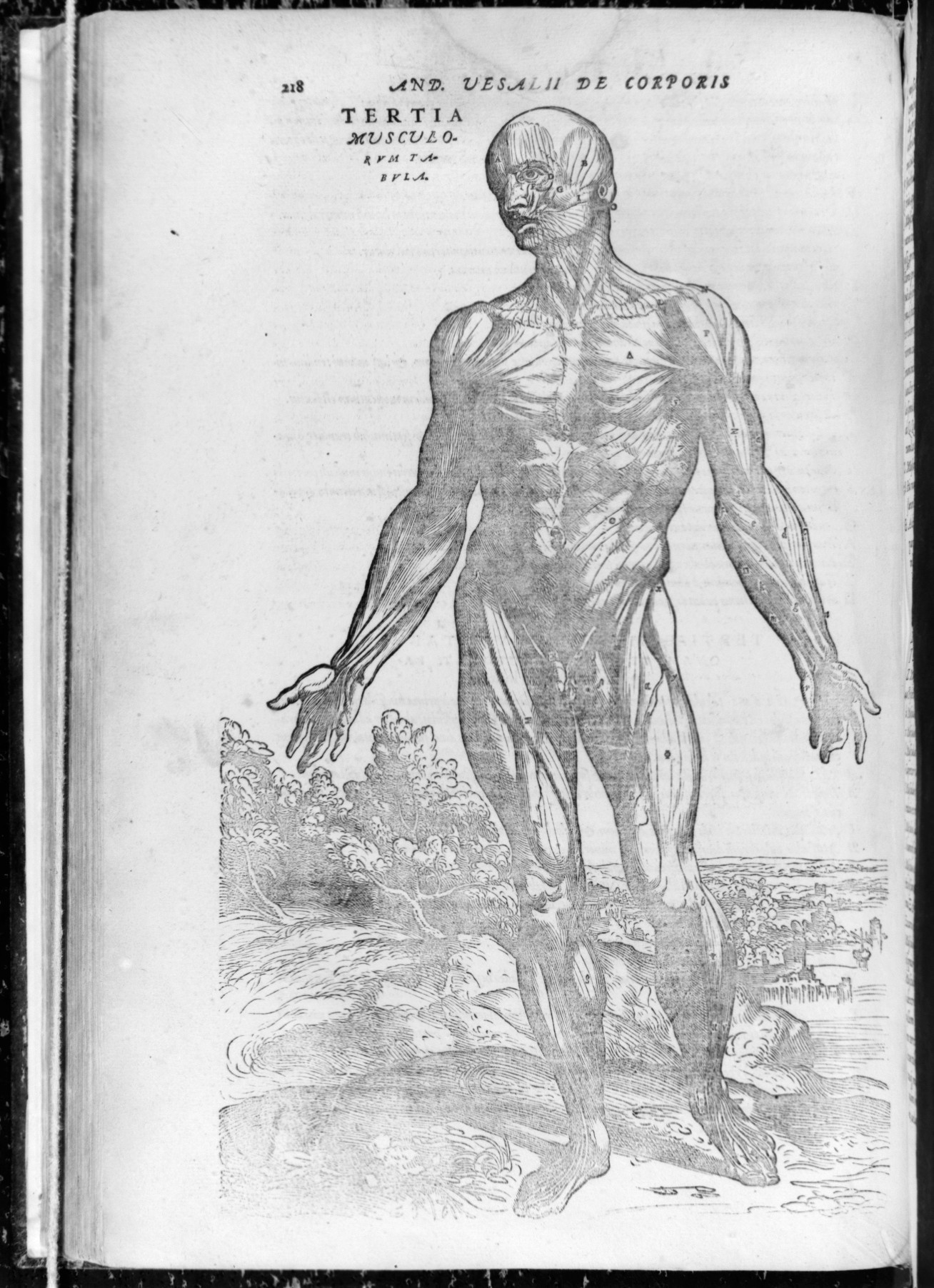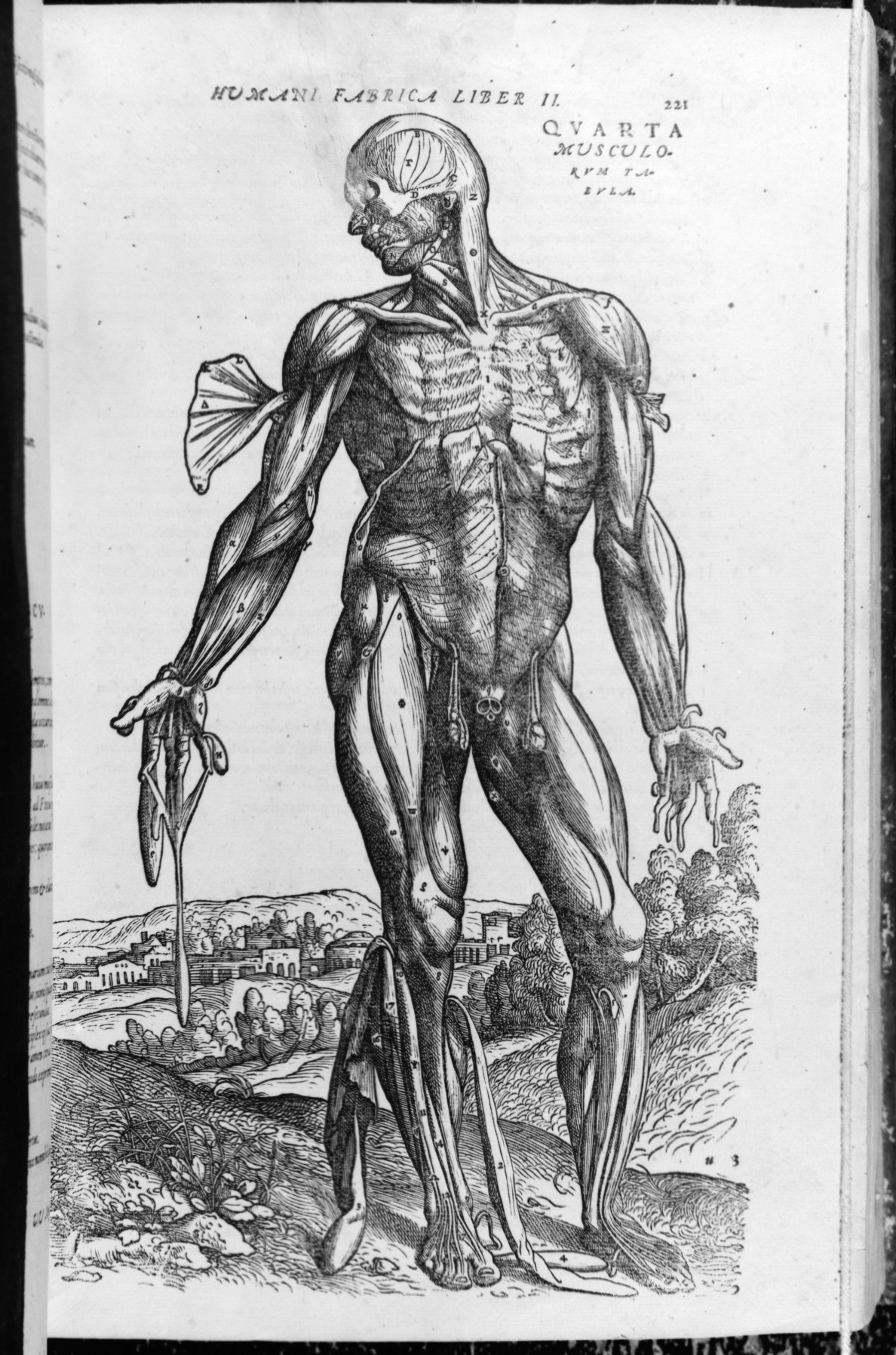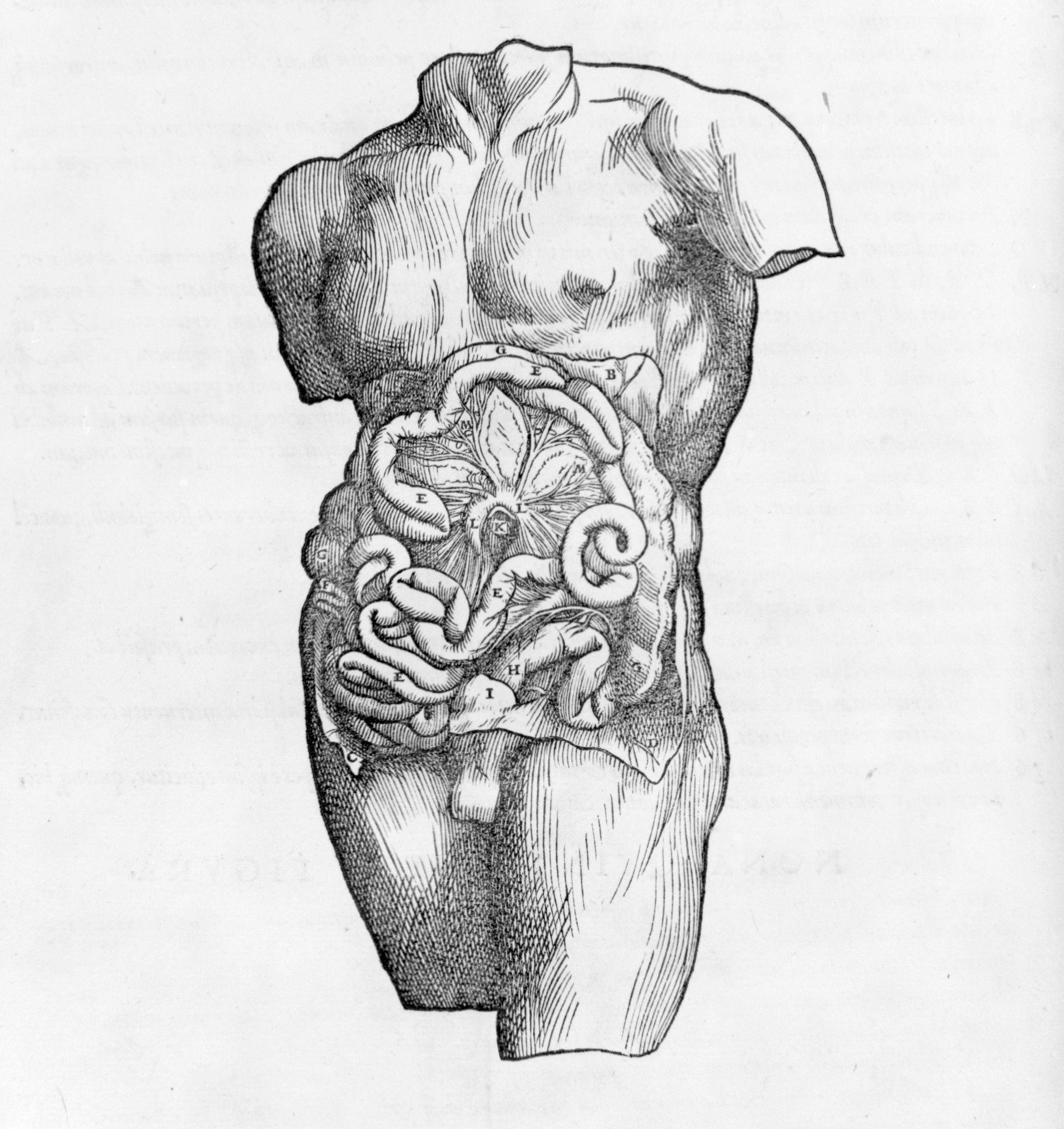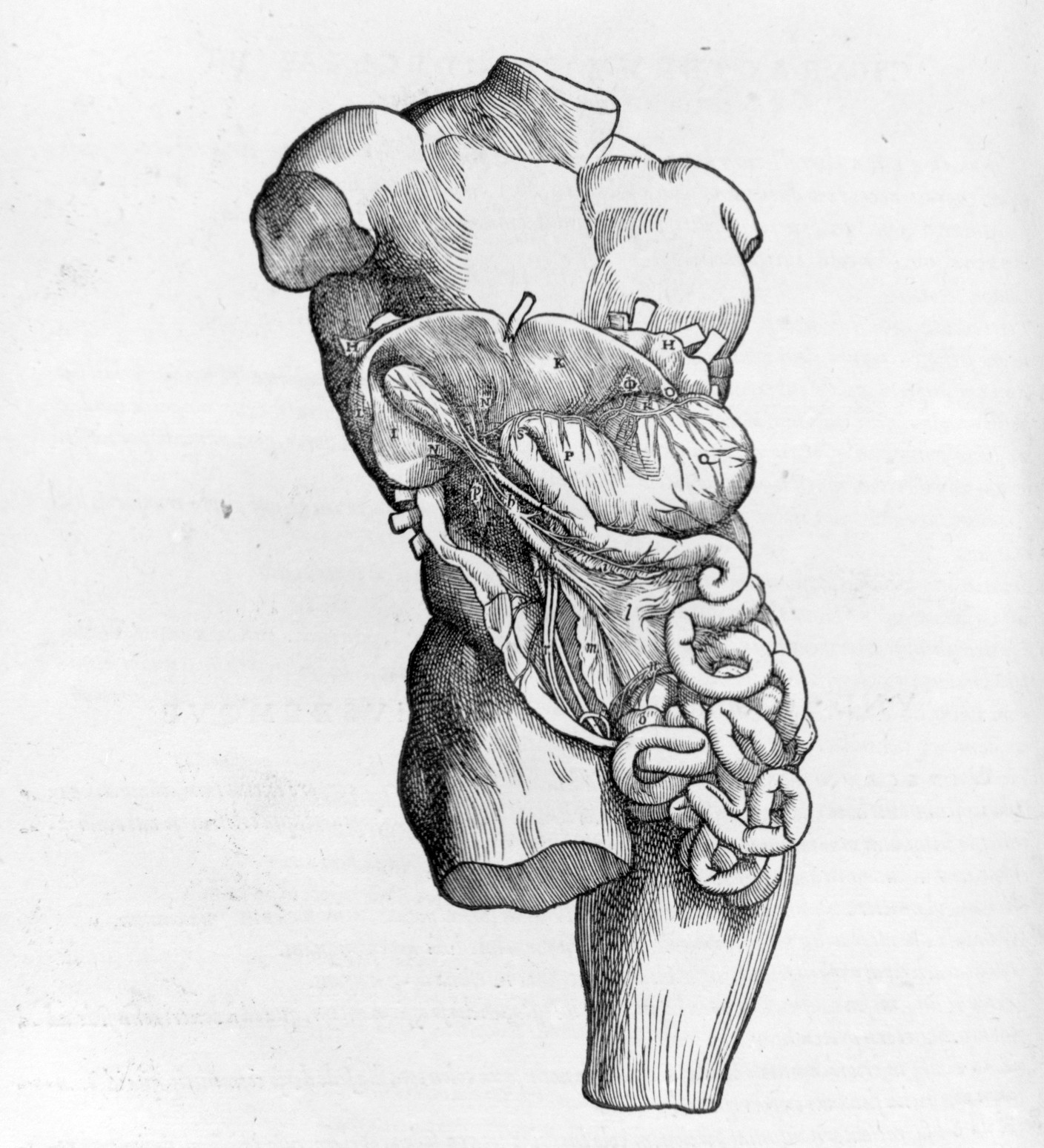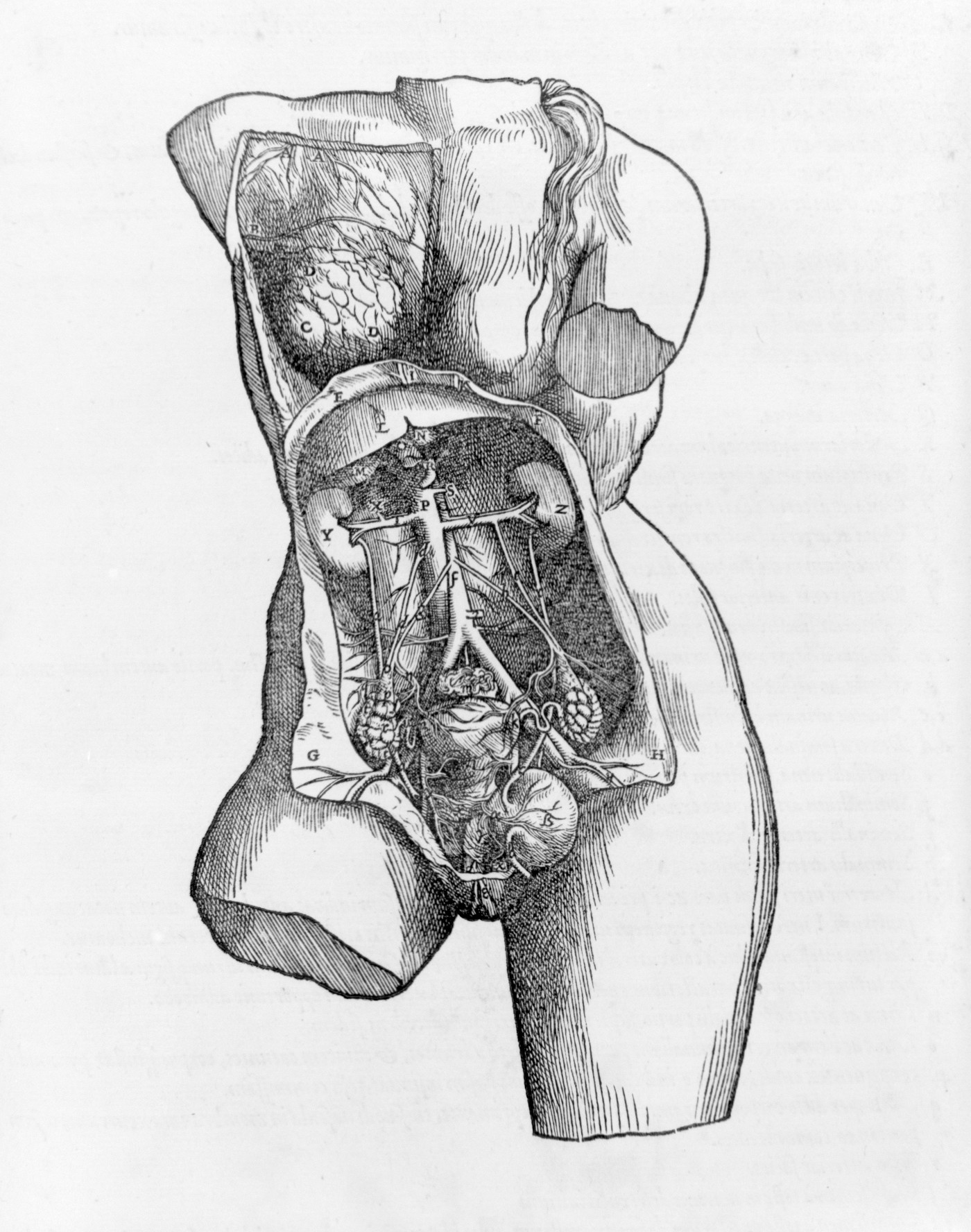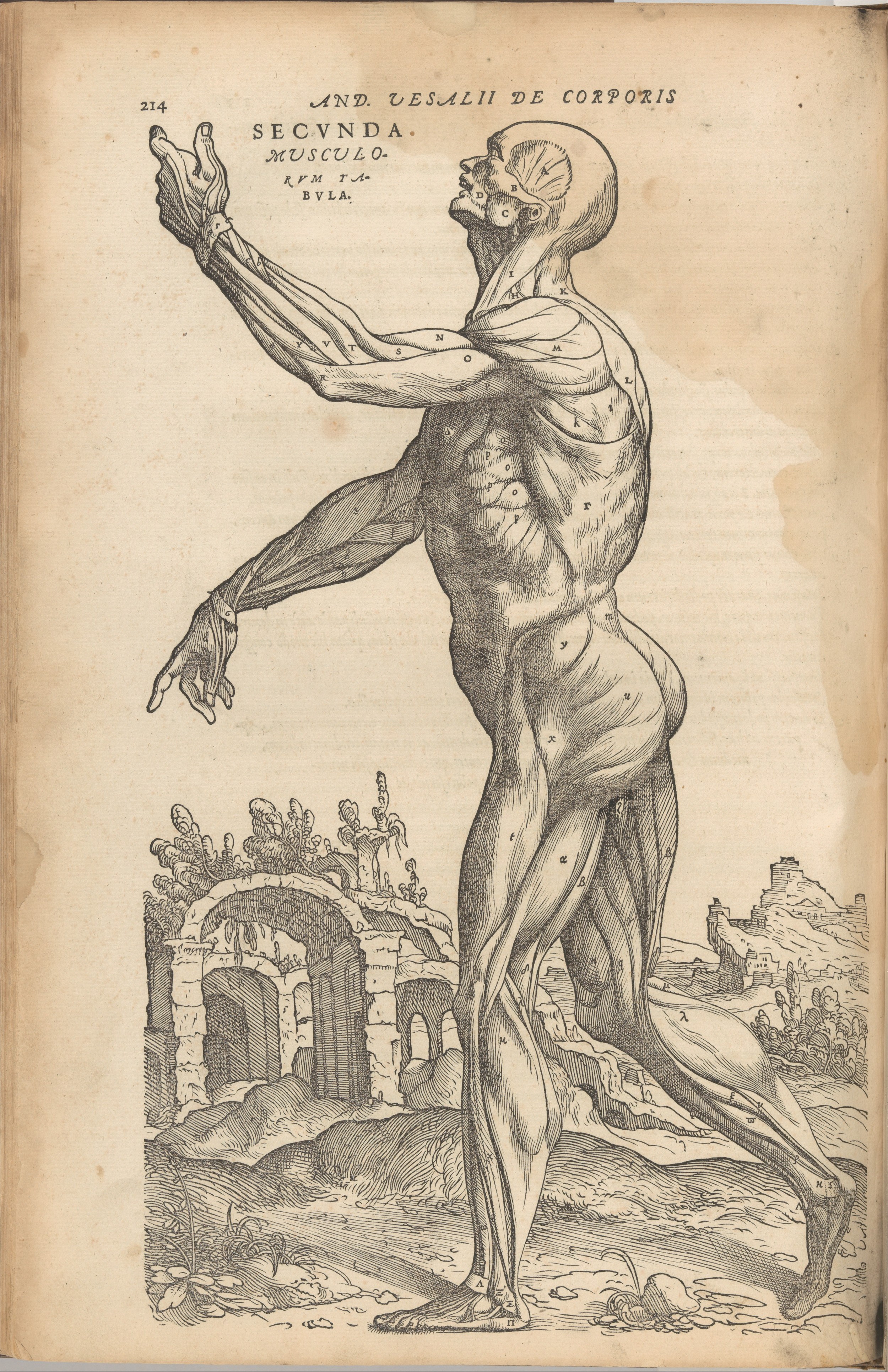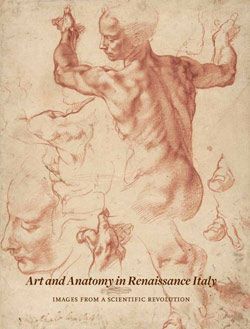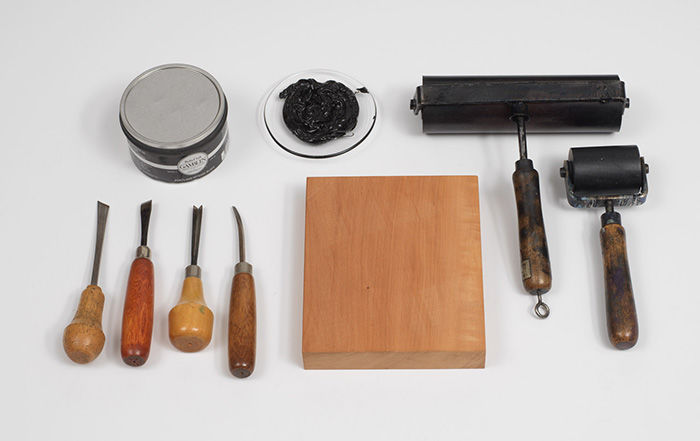De humani corporis fabrica (Of the Structure of the Human Body)
Author Andreas Vesalius Flemish
John of Calcar (John Stephen Calcar) Netherlandish
Publisher Johann Oporinus Swiss
Not on view
When Andreas Vesalius (1514–1564) first published his radical De humani corporis fabrica (On the Structure of the Human Body), the ancient texts of Aristotle and Galen were still judged authoritative in the medical schools of Europe. By performing his own dissections, Vesalius discovered errors in the ancient authors' teachings. The De humani corporis fabrica, which drew attention to these flaws, initially threatened the academic medical establishment but ultimately won Vesalius admiration and a post as court physician to Charles V, to whom he dedicated the volume.
Carefully integrated into Vesalius' text are over 200 woodcuts executed by a skilled group of artists that may have included Jan Steven van Calcar (1499–1546), who trained in the workshop of Titian. No text on anatomy before the Fabrica had ever been illustrated so completely or so well, and although the plates are didactic in intent, they are also rich in aesthetic merit. The frontispiece shows Vesalius himself lecturing to a huge crowd in a grand interior; breaking tradition, he stands directly beside the corpse, dissecting with his own hands. A famous sequence of plates depicts a series of flayed men and skeletons, standing as though in poses of pain or contemplation, in landscapes with distant towns and low horizons. In addition to demonstrating the physical structures of the body, they imply concern for more elusive aspects of the human condition.
Due to rights restrictions, this image cannot be enlarged, viewed at full screen, or downloaded.
This artwork is meant to be viewed from right to left. Scroll left to view more.
